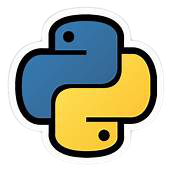Description
This a two-day course that provides an overview of how Python can be used in Data Science to manipulate, process, clean, and crunch data.
It is an introduction to scientific computing in Python focusing on data-intensive applications. This course will review the essential Python libraries:
NumPy
Pandas
Matplotlib
IPython
SciPy
Students wanting to use Python in data analytics applications.
Prerequisites
It is recommended that students that are interested in this course have:
Introductory Python course/s
Six months of Python programming experience.
What’s included?
- Authorized Courseware
- Intensive Hands on Skills Development with an Experienced Subject Matter Expert
- Hands-on practice on real Servers and extended lab support 1.800.482.3172
- Examination Vouchers & Onsite Certification Testing- (excluding Adobe and PMP Boot Camps)
- Academy Code of Honor: Test Pass Guarantee
- Optional: Package for Hotel Accommodations, Lunch and Transportation
With several convenient training delivery methods offered, The Academy makes getting the training you need easy. Whether you prefer to learn in a classroom or an online live learning virtual environment, training videos hosted online, and private group classes hosted at your site. We offer expert instruction to individuals, government agencies, non-profits, and corporations. Our live classes, on-sites, and online training videos all feature certified instructors who teach a detailed curriculum and share their expertise and insights with trainees. No matter how you prefer to receive the training, you can count on The Academy for an engaging and effective learning experience.
Methods
- Instructor Led (the best training format we offer)
- Live Online Classroom – Online Instructor Led
- Self-Paced Video
Speak to an Admissions Representative for complete details
| Start | Finish | Public Price | Public Enroll | Private Price | Private Enroll |
|---|---|---|---|---|---|
| 5/12/2025 | 5/13/2025 | ||||
| 6/2/2025 | 6/3/2025 | ||||
| 6/23/2025 | 6/24/2025 | ||||
| 7/14/2025 | 7/15/2025 | ||||
| 8/4/2025 | 8/5/2025 | ||||
| 8/25/2025 | 8/26/2025 | ||||
| 9/15/2025 | 9/16/2025 | ||||
| 10/6/2025 | 10/7/2025 | ||||
| 10/27/2025 | 10/28/2025 | ||||
| 11/17/2025 | 11/18/2025 | ||||
| 12/8/2025 | 12/9/2025 | ||||
| 12/29/2025 | 12/30/2025 | ||||
| 1/19/2026 | 1/20/2026 |
Curriculum
Module 1: Building Blocks
Working with Python
Numpy Ndarrays
Slicing and indexing
Scalar Operations
Shape-Shifting
Descriptive Statistics
Array Operations
Multiple Dimensions
Array Creation Options
Data Types
Getting Numpy-Specific Help
Overview of Data Visualization/Presentation tools
Module 2: Overview of Pandas
Working with Pandas in an IDE
Enhancements from Ndarray Objects
Series Objects
Pandas in 2-D
Pandas in 3-D
Module 3: Data Acquisition N
Dealing with missing Data and Outliers
Slicing, Dicing, and Re-Indexing
Data description/Analysis Tools
Module 4: Data Visualization
Module 5: DataTime-Like Objects
Basic time series Operations
Introspecting Time Series
Tools for Holidays, Business Day, Etc..
Comparing and combining Data from different Series
Time shifting and time “Window” Operations
Module 6: Pandas Database OPS
Comparison of SQL Operations and Pandas Methods
Creating Pivot Tables and Cross-Tabulations
Aggregating data across different tables
Creating complex queries with intermediate Data frame Objects
Module 7: Pandas + Machine Learning tools
What is LDA?
Getting to know the data
Exploring data integrity
Applying the LDA Model
Do you want a doggie bag?
A quick recap of the analysis
Review A: Text-only debugging
The PDB debug library
Other text-based tools
Integrating logging with debugging
Review B: Introduction to Bayesian Analysis
A simple real-life example
The Bayesian approach
Reality checking


